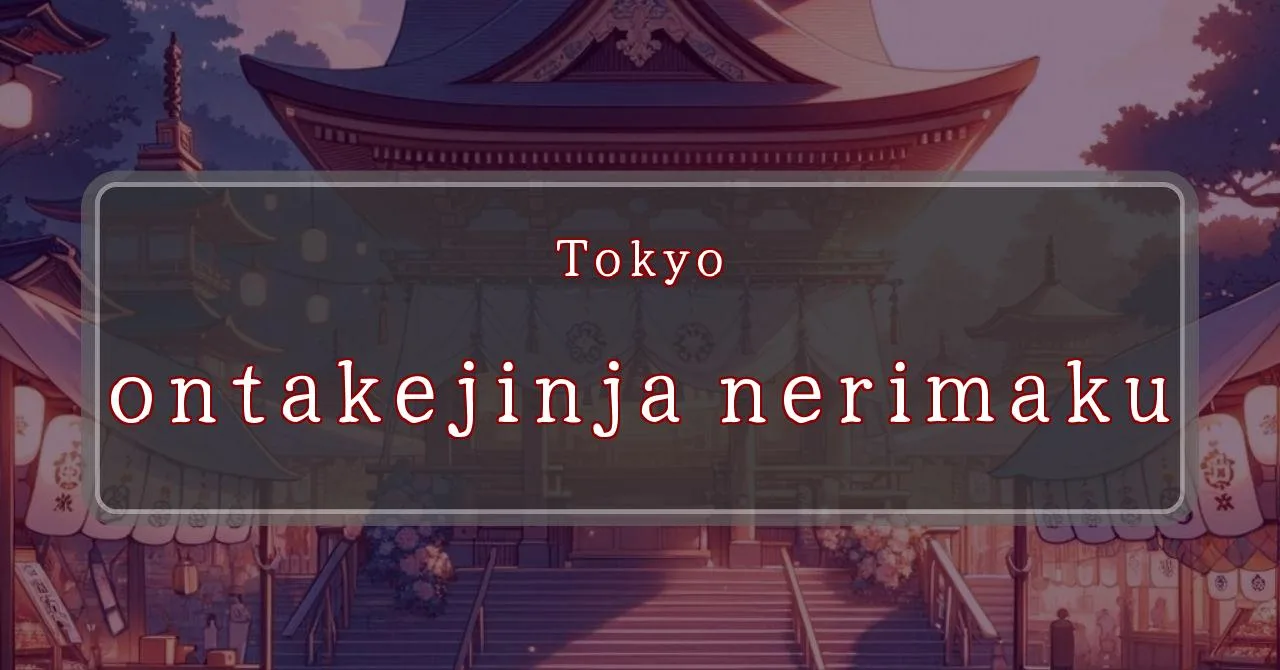Winter solstice lights and purification rituals
Basic Information
Ontake Jinja Shrine is a shrine located in Shakujii, Nerima Ward, Tokyo, Japan. It is dedicated to the deities Kuninotokotachi-no-Mikoto, Ōnamuchi-no-Mikoto, and Sukunahikkujii, Nerima-ku, Tokyo 177-0042
Main Events and Attractions of the Festival
The Ontake Jinja Shrine Winter Solstice Festival is a traditional festival held annually on the winter solstice day in December. It features various events and attractions that draw visitors from near and far.
Fire Walking Ceremony (Hiwatari-Shinji)
The highlight of the festival is the Fire Walking Ceremony, a purification ritual where participants walk barefoot across hot coals. This ritual is believed to bring good luck and ward off evil spirits. Participants undergo a purification process before walking on the hot coals, which are said to be blessed by the shrine’s deity.
- Content: Participants walk barefoot across hot coals.
- Significance: Purification ritual to bring good luck and ward off evil spirits.
Lion Dance (Shishimai)
Another popular attraction is the Lion Dance, performed by skilled dancers wearing colorful lion costumes. The lion dance is believed to bring good fortune and prosperity to the community. The dancers move to the rhythm of traditional music, entertaining the audience with their lively performance.
- Content: Lion dance performed by skilled dancers.
- Significance: Believed to bring good fortune and prosperity.
Benefits and Deities
The Ontake Jinja Shrine Winter Solstice Festival is believed to bring various benefits to those who participate. It is said to purify the body and mind, ward off evil spirits, and bring good luck. The festival also honors the shrine’s deities, Kuninotokotachi-no-Mikoto, Ōnamuchi-no-Mikoto, and Sukunahikona-no-Mikoto, who are revered for their roles in creation, agriculture, and medicine.
- Benefits: Purification, warding off evil spirits, good luck.
- Deities: Kuninotokotachi-no-Mikoto, Ōnamuchi-no-Mikoto, Sukunahikona-no-Mikoto.
Blessings and Deities
The Ontake Jinja Shrine Winter Solstice Festival is believed to bring various benefits to those who participate. It is said to purify the body and mind, ward off evil spirits, and bring good luck. The festival also honors the shrine’s deities, Kuninotokotachi-no-Mikoto, Ōnamuchi-no-Mikoto, and Sukunahikona-no-Mikoto, who are revered for their roles in creation, agriculture, and medicine.
- Benefits: Purification, warding off evil spirits, good luck.
- Deities: Kuninotokotachi-no-Mikoto, Ōnamuchi-no-Mikoto, Sukunahikona-no-Mikoto.
Origin and History
The exact origins of the Ontake Jinja Shrine Winter Solstice Festival are unknown, but it is believed to have been held for centuries. The shrine itself is said to have been founded during the Edo period (1603-1868), and the festival is thought to have originated around the same time. The festival is rooted in ancient Japanese traditions and beliefs, particularly the reverence for the winter solstice as a time of spiritual renewal and purification.
- Origins: Uncertain, possibly dating back centuries.
- Shrine Founding: Edo period (1603-1868).
- Roots: Ancient Japanese traditions and beliefs.
Tips and Notes for Visitors
If you plan to attend the Ontake Jinja Shrine Winter Solstice Festival, here are some tips and notes to ensure a safe and enjoyable experience:
- Dress warmly: The festival takes place during the winter solstice, so temperatures can be cold. Be sure to wear warm clothing and layers to stay comfortable.
- Arrive early: The festival is popular, so it’s a good idea to arrive early to avoid crowds and secure a good spot to view the events.
- Be respectful: The festival is a religious event, so be respectful of the shrine and its customs. Avoid loud noises and disruptive behavior.
- Follow instructions: Shrine officials and volunteers will be present to provide guidance and instructions. Follow their instructions to ensure the safety and smooth running of the festival.
Parking Information
There is no dedicated parking lot at the Ontake Jinja Shrine. However, there are several coin-operated parking lots in the surrounding area. Here are some options:
- Times Nerima Shakujii Dai 2
- Mitsui’s RePark Nerima Shakujii Ekimae Park 24
- Nerima Shakujii Ekimae
Popular Stalls and Food Carts in Recent Years
| Type of Stall | Description |
|---|---|
| Takoyaki | A staple at Japanese festivals. Characterized by a crispy outside and a creamy inside. |
| Jaga Butter | A simple yet popular snack of hot potatoes lavishly topped with melted butter. |
| Baby Castella | Small castella cakes, sweet and fluffy treats enjoyed by children and adults alike. |
| Grilled Ayu with Salt | Fresh ayu fish grilled whole with salt, a savory taste of Japanese summer. |
| Shaapin | A unique gourmet item influenced by foreign cuisine, with a chewy skin wrapping the filling. |
| Okonomiyaki | A Japanese grilled dish where you often choose your own ingredients for a personalized flavor. |
| Cotton Candy | A fluffy, sweet snack that’s extremely popular with children. |
| Chocolate Banana | A banana coated in chocolate, a fun and visually appealing dessert. |
| Kushiyaki | Various types of ingredients skewered and grilled, an easy-to-enjoy snack. |
| Yakisoba | Fried noodles mixed with a special sauce, a fast food favorite in Japan. |



